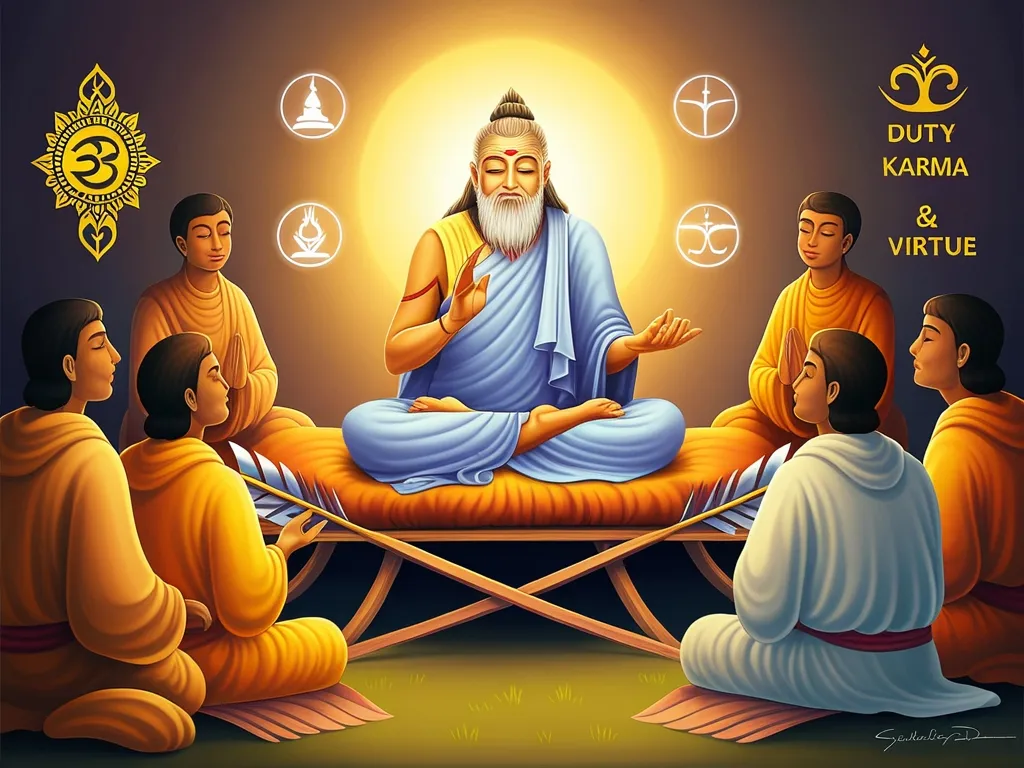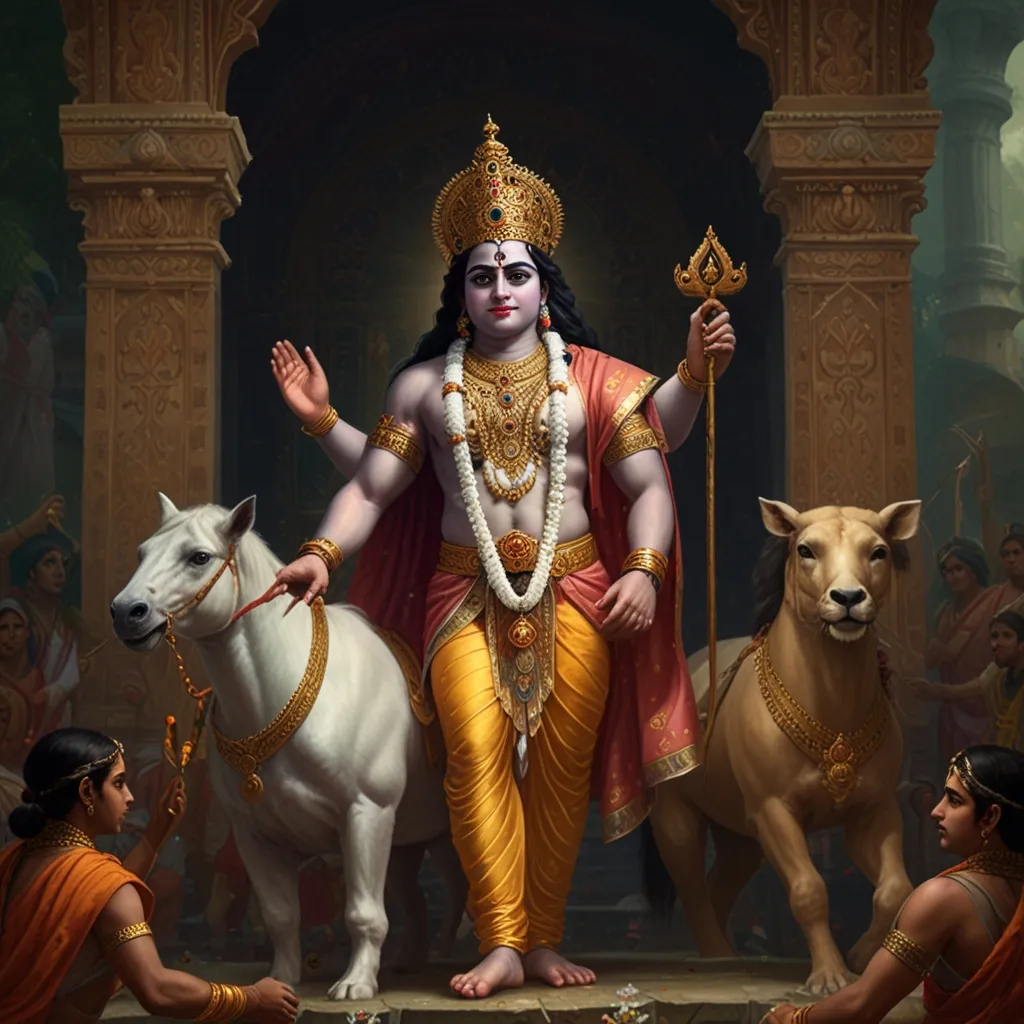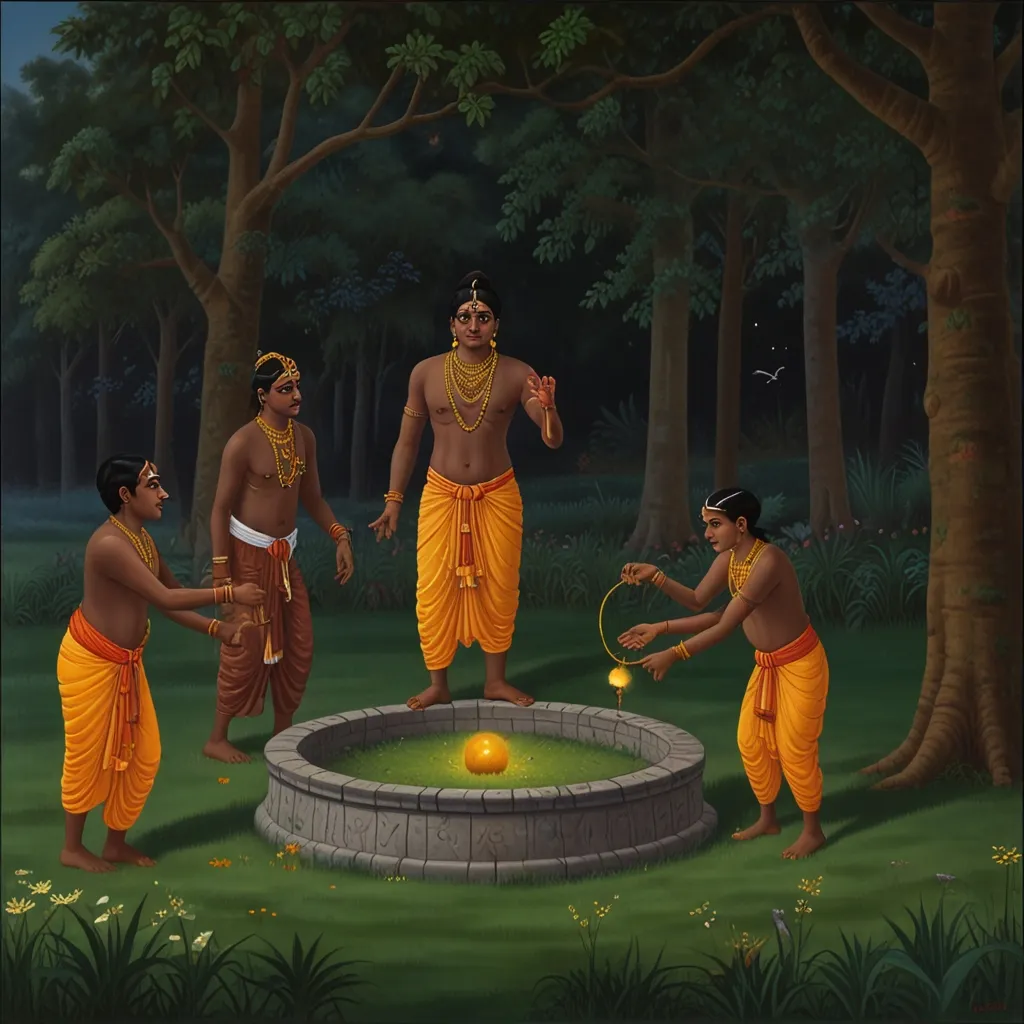In ancient India, there was this sage named Vibhandak who was famous for his exceptional spiritual powers and deep dedication to his practices. Vibhandak was actually the son of the renowned sage Kashyapa and had given his entire life to rigorous penance. One day, as he was cooling off in a lake, he spotted Urvashi, a celestial nymph as stunning as a goddess. Even though Vibhandak had committed himself to an ascetic life, he was briefly overwhelmed by his desires and ended up releasing his semen into the water. A doe, who was actually a cursed apsara, drank from this lake and accidentally swallowed the semen, resulting in her pregnancy.
This doe eventually gave birth to a boy who surprisingly had tiny deer horns. Vibhandak named him Rishyasringa, which roughly translates to “a sage with deer horns.” Vibhandak was adamant about raising Rishyasringa far away from worldly distractions. So, they lived secluded in a dense forest with the intention of protecting him from all temptations and ensuring he followed a path of pure asceticism. Rishyasringa had no clue about women or the pleasures of the world. His days were spent in intense penance and he gained magical powers through his rigid chastity.
Far away in the kingdom of Anga, things weren’t great. King Rompada was dealing with a major crisis. He had somehow offended a Brahmin, and the god Indra wasn’t pleased at all. This resulted in a prolonged drought and famine that tormented the kingdom. With people suffering badly, King Rompada was desperate for a way out. He consulted sages who suggested that only a man with perfect chastity could bring back the rain. That’s when Rompada heard about Rishyasringa and hatched a plan to bring him to Anga.
King Rompada was aware of the fact that Rishyasringa was not only powerful but also that his father Vibhandak was fiercely protective of him. So, instead of using force, which might provoke Vibhandak’s curse, he crafted a clever scheme. Rompada sent his top courtesans into the forest with the mission of seducing Rishyasringa. Though they were initially scared of angering Vibhandak, the courtesans were resolute.
These courtesans built a hermitage near Rishyasringa’s secluded home and bided their time until Vibhandak left for his daily penance. Once they had their chance, they approached Rishyasringa dressed in simple robes, posing as fellow hermits. Rishyasringa, having never laid eyes on a woman, was amazed by their grace and beauty. He invited them to stay and practice penance with him. They plied him with sweets and luxuries he had never known. It didn’t take long for Rishyasringa to become completely enchanted by their presence.
In no time, Rishyasringa eagerly anticipated their daily visits. The courtesans eventually coaxed him into visiting their hermitage. Unaware of their real motives, he followed them and as soon as he left the forest, they led him straight to the kingdom of Anga. The moment Rishyasringa stepped onto Anga’s soil, the skies opened up and it started raining, ending the drought. The people of Anga were beyond thrilled and celebrated the return of the rain.
King Rompada was massively relieved and eternally grateful. Wanting to keep Rishyasringa in his kingdom, he offered the hand of his adopted daughter Shanta in marriage to the young sage. Here’s a cool twist: Shanta was actually the biological daughter of King Dasharath and Queen Kausalya—yep, the parents of Lord Rama. Still under the spell of the courtesans, Rishyasringa agreed to the marriage. Their wedding turned out to be a grand affair, full of pomp and splendor, after which Rishyasringa and Shanta returned to the forest to live a life of austerity.
Later on, King Dasharath invited Rishyasringa to Ayodhya to perform a Putra Kameshti Yajna, which is a ritual meant for begetting children. Rishyasringa accepted and performed the ritual successfully. Thanks to this, Dasharath was blessed with four divine sons: Rama, Bharat, Lakshman, and Shatrughna. Because of his crucial role in ending the drought and helping Dasharath, Rishyasringa became a revered figure in Hindu mythology.
The story of Rishyasringa is a lesson in the power of chastity and the significance of adhering to one’s vows. Even though he was pulled away from his ascetic life temporarily, Rishyasringa managed to stay true to his nature and used his powers for the greater good. His legacy is a lasting reminder of the importance of purity and devotion, continuing to inspire people through generations.






